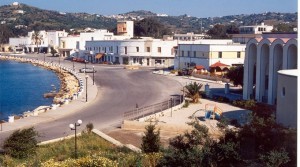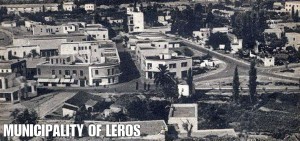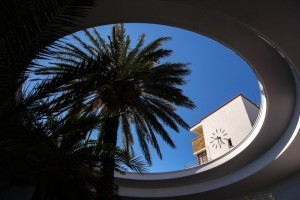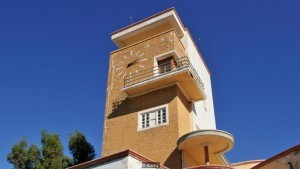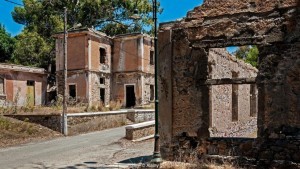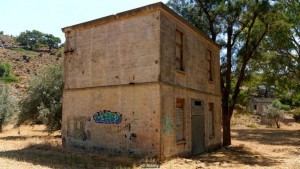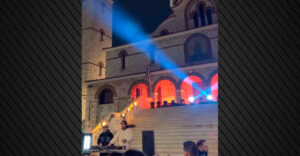BBC’s culture and story writer Alex Sakalis praises the weird and unique beauty of one of the most unlikely places in Greece, the small town of Lakki on the Dodecanese island of Leros. The author dubs it as a town like no other in the country.
Lakki, on the Dodecanese island of Leros, is unique. Its church, austere and minimalist, is more Bauhaus than Mamma Mia. The school, with its wide, looping porticos, is a hybrid of modernist and Byzantine elements. The pulsating Art Deco cinema seems to power towards the sea like a speeding bullet train. Just behind it, a UFO-shaped atrium latches onto the town’s imposing clock tower. A strange, disc-shaped appendage sprouts from the tower like a toadstool. As if to hammer home the surreal nature of it all, all four clock faces show different times.
Few people know this place exists, and even those who live here view their town with a degree of scepticism.
Its origins date back to the early 20th Century when Leros, along with the rest of the Dodecanese, was under Italian rule. Strategically placed and gifted with one of southern Europe’s biggest natural harbours, it was here that Mussolini decided to house the Royal Italian Navy, as part of his plan to establish control over the eastern Mediterranean.
In 1923, he sent two architects – Rodolfo Petracco and Armando Bernabiti – to Leros in order to construct a model town on the harbour for the settlement of thousands of Italians, including military personnel and their families. At the time, the whole bay was uninhabited marshland and authorities began filling in the area with tonnes of concrete imported from Italy.
Upon arriving in Leros, Petracco and Bernabiti surveyed the area, sat down and began to design their utopian town from scratch.
Fanning out in a series of wide, curving roads, their town would prioritise efficiency and order, while espousing a sense of beauty and harmony. On the eastern perimeter, a railroad would carry cargo from the port to the customs house. Next to that would be the economic zone, with a cinema, market and hotel. Further into town, the residential zone would be comprised of separate quarters for different ranking officers and workers. The houses, some of which have been beautifully restored, are graceful cylinders and cuboids with spacious gardens. A huge hospital was built. Large squares were constructed and hundreds of pine and eucalyptus trees were planted.
The resulting town, which the Italians named Portolago, is considered to be the only true rationalist town outside of Italy.
Playfulness and absurdity
Rationalism, an architectural movement which developed in early 20th-Century Italy, emphasised simple, functional design based on ideals of purity, reason and universalism. It drew inspiration from emerging trends such as modernism and the Futurist movement, as well as the classical geometry of ancient Greek and Roman temples.
However, even within the rationalist movement, Lakki is an oddity.
“Whereas Italian rationalist towns were rigid, monotonous and unjustifiably monumental,” writes Anthony Antoniades, author of Italian Architecture in the Dodecanese: A Preliminary Assessment, “the architecture of Lakki is diverse, inclusivist and imaginative.”
George Trampoulis is Leros’s local historian and archivist. At his office in the island’s colourful capital, Platanos, he shows me the original masterplan of Lakki, signed by Petracco, and explains his goal of moving the island’s archives to the old naval barracks ̶ a picturesque rationalist-Moorish building on the western fringes of Lakki.
Trampoulis describes Petracco and Bernabiti as talented yet eccentric men who didn’t quite fit in with the Fascist establishment back in Italy.
“They took advantage of the lack of direct oversight from Rome to explore and experiment, indulge in flights of fancy, and merge rationalism with local vernacular styles,” he says.more at BBC.com
Ask me anything
Explore related questions
